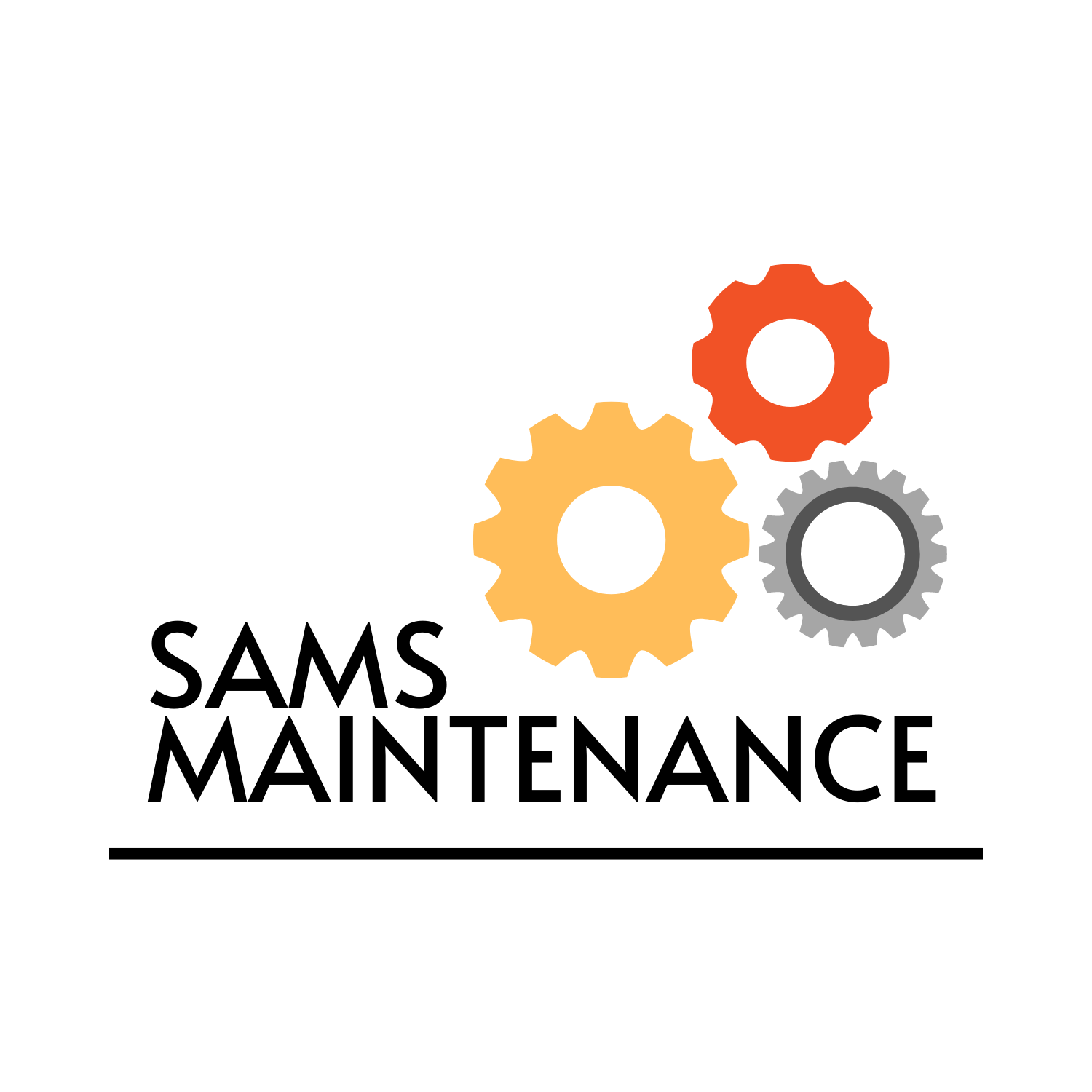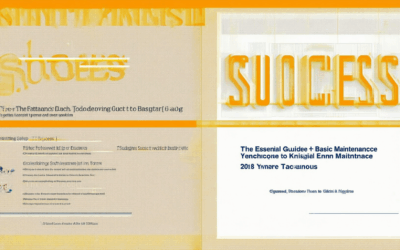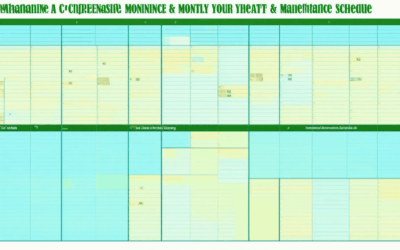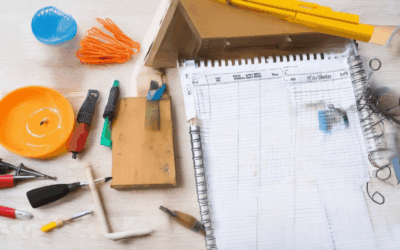Maintaining a household can feel overwhelming at times, especially when faced with endless tasks and responsibilities. However, mastering the art of household upkeep essentials doesn’t have to be a daunting challenge. By adopting a structured approach and utilizing effective checklists, homeowners can streamline their routine and ensure their living spaces remain comfortable and functional year-round. Whether it’s tackling daily chores, preparing for seasonal changes, or investing in essential tools, understanding what needs to be done and when is key to preserving the value of your home. This guide will walk you through creating a comprehensive maintenance checklist tailored to your unique needs, helping you stay organized and proactive in managing your household upkeep. From identifying the 1% rule for long-term success to exploring the 4 Ps of maintenance, this article offers actionable insights and practical tips to help you maintain your home in peak condition. Keep reading to discover how you can transform your approach to household upkeep and enjoy a cleaner, more efficient living environment.
Key Takeaways
– A maintenance checklist is a proactive tool for household upkeep, helping prevent issues and maintain optimal performance.
– There are three main types: residential, commercial, and machinery-specific checklists tailored to different needs.
– Effective checklists include scheduled frequencies, essential tasks, required tools, and practical examples like checking for leaks.
– Using a checklist saves money, ensures safety, and prolongs asset life by addressing problems early.
– To create an effective checklist, prioritize tasks, use trusted sources, and update regularly with new regulations.
– The 4 Ps—Presentation, Protection, Preparation, and Partnership—are key to optimizing maintenance strategies, ensuring efficiency and reliability.
– Daily maintenance should cover cleaning, laundry, kitchen checks, bathroom routines, exterior inspections, appliance tests, and security reviews.

What Maintenance is Needed for a House?
The maintenance of a house requires a combination of regular checks and routine tasks to ensure its longevity and functionality. Here’s a detailed guide to help you stay on top of everything:
Exterior Maintenance
- Roof Inspection:** Inspect for missing shingles, cracks, or damage. Replace any worn-out materials as needed.
- Gutter Cleaning:** Clear out debris like leaves and dirt to prevent water buildup and foundation issues.
- Siding Check:** Look for peeling paint, rot, or structural damage that may require repainting or repair.
- Deck Maintenance:** Clean and inspect for warping, splintering, or loose boards. Sand and reapply finish if necessary.
- Fence Inspection:** Ensure rails are secure and free from rust or damage. Replace any broken parts immediately.
- Driveway and Walkways:** Clean and fill cracks. Consider sealing if necessary to prevent further damage.
Interior Maintenance
- Cleaning:** Regularly dust, vacuum, and mop floors, walls, and surfaces to maintain hygiene and prevent dirt buildup.
- Carpet Care:** Spot clean stains and schedule professional cleaning to extend carpet life and improve air quality.
- Kitchen and Bathroom:** Wipe down countertops, clean sinks, and check for leaky pipes or fixtures under the sink.
- Appliance Maintenance:** Clean vent hood filters, empty dryer lint traps, and test smoke detectors annually.
Systems Maintenance
- Heating, Ventilation, and Air Conditioning (HVAC):** Change filters monthly and schedule professional inspections twice a year to ensure efficiency and safety.
- Plumbing:** Check for leaks around pipes, under sinks, and behind appliances. Address any issues promptly to prevent costly repairs.
- Electrical Systems:** Test GFCI outlets, check for tripped breakers, and ensure all wiring is secure and free from fraying.
- Fire Safety:** Inspect chimneys and vents for blockages, test smoke detectors, and ensure fire extinguishers are functional and accessible.
Safety Checks
- Smoke Detectors:** Replace batteries every 6 months and test functionality.
- Carbon Monoxide Detectors:** Ensure these are working and placed near potential sources of fumes.
- Locks and Security:** Replace outdated locks, test door locks, and ensure garage doors are secure.
- Security Systems:** Schedule regular checks for alarms, cameras, and motion sensors to maintain protection.
Seasonal Tasks
- Spring Cleaning:** Remove cobwebs, clean gutters, and prepare lawns for the growing season.
- Fall Preparation:** Rake leaves, trim trees, and store outdoor furniture to protect against damage.
- Winterizing:** Insulate pipes, drain sprinklers, and remove hoses to prevent freezing damage.
By staying proactive with these maintenance tasks, you can preserve your home’s value, ensure safety, and extend its lifespan. For more detailed guides and professional advice, visit Sams Maintenance .
What is the 1% Rule for Home Maintenance?
The 1% rule for home maintenance is a simple yet effective strategy to budget for unexpected repair costs. Here’s a breakdown:
- 1% Rule Calculation: Set aside 1% of your home’s purchase price annually for maintenance. This covers repairs, replacements, and unexpected issues.
- Example: For a $300,000 home, 1% is $3,000 annually or approximately $250 monthly.
- Why It Matters: Homes require regular upkeep, and the 1% rule helps prepare for unforeseen expenses without overwhelming you financially.
### Additional Considerations
- Appliance Breakdown: Major appliances like HVAC systems or refrigerators often fail, requiring immediate attention. The 1% rule helps cover these costs.
- Emergency Preparedness: Natural disasters or accidents can lead to costly repairs. Having a maintenance fund eases the financial burden during crises.
- Customizing Your Budget: Adjust the 1% based on your home’s unique needs. For example, homes with septic tanks or specialized systems may require more funds.
### How to Create a Maintenance Budget
- Track Expenses: Keep a record of all maintenance-related costs to better understand your spending habits.
- Prioritize Repairs: Address urgent issues first, such as leaky pipes or electrical problems, before moving on to routine upgrades.
- Consider Insurance: Some home insurance policies cover certain maintenance costs. Review your policy to maximize benefits.
For more insights and tools to manage your home maintenance budget, visit our maintenance resources . Also, explore tips and guides on HomeAdvisor and Fixer Upper for additional inspiration and practical advice.

How to Maintain a Home Checklist
Creating and maintaining a home checklist can significantly enhance your ability to keep your living space in great shape. Below is a detailed guide to help you stay organized and proactive with your home maintenance.
Monthly Home Maintenance Checklist
- Monthly Cleaning Schedule:
- Kitchen: Clean countertops, sinks, and floors. Empty and clean trash bins.
- Bathroom: Scrub tiles, showers, and toilets. Replace bathroom towels and linens.
- Living Areas: Vacuum carpets, dust furniture, and clean windows.
- Bedrooms: Make beds, fold laundry, and organize closet spaces.
- Appliance Checks:
- Fridge/Freezer: Defrost if needed, clean shelves, and check expiration dates.
- Dishwasher: Run a cycle with vinegar to clean interiors.
- Water Heater: Flushing it monthly helps prevent sediment buildup.
- Exterior Checks:
- Gutters: Clear clogs and inspect for leaks or damage.
- Windows: Clean screens and frames. Inspect for cracks or peeling paint.
- Decks/Patios: Remove debris and check for structural issues.
Seasonal Home Maintenance
- Spring Cleaning:**
- Inspect gutters and downspouts for blockages.
- Check foundation for cracks or water damage.
- Clean and store winter items like lawn equipment.
- Summer Preparation:
- Test air conditioning unit and ensure it’s running efficiently.
- Inspect outdoor lighting and electrical systems.
- Prepare for summer storms by securing loose items.
- Fall Maintenance:
- Clear leaves from roofs and gutters.
- Check for signs of pests and rodents.
- Inspect chimneys and flues for damage or blockages.
- Winter Preparation:
- Service heating systems and ductwork.
- Seal windows and doors to reduce drafts.
- Stockpile supplies like rock salt and firewood.
Additional Tips for Homeowners
- Schedule regular professional inspections for critical systems like plumbing and HVAC.
- Keep a record of maintenance activities and service providers.
- Stay informed about local building codes and safety regulations.
- Consider enrolling in a home maintenance course or workshop.
For more detailed guides and resources, visit our comprehensive home maintenance checklist and explore our seasonal maintenance tips .

What is a Maintenance Checklist?
A maintenance checklist is a comprehensive guide used to ensure that various systems, equipment, or properties are inspected, maintained, and repaired regularly. It serves as a roadmap to prevent issues before they arise and to keep everything functioning optimally. Whether it’s for a home, a commercial building, or industrial machinery, a maintenance checklist helps individuals or organizations stay proactive in preserving their assets.
Types of Maintenance Checklists
- Residential Maintenance Checklist : Covers tasks for homeowners to inspect and maintain their property, including plumbing, electrical systems, and landscaping.
- Commercial Maintenance Checklist : Tailored for businesses to ensure the safety and functionality of their facilities, such as HVAC systems, fire safety measures, and structural integrity.
- Machinery Maintenance Checklist : Designed for operators to monitor and maintain equipment, reducing downtime and extending its lifespan.
Components of a Good Maintenance Checklist
- Frequency of Checks : Specifies how often each task should be performed (e.g., weekly, monthly, quarterly).
- Tasks Involved : Includes inspections, lubrication, tightening of connections, and testing of systems.
- Tools Required : Lists necessary tools or equipment for completing the tasks.
- Examples of Tasks :
- Checking for leaks in pipes or hoses.
- Testing smoke detectors and fire extinguishers.
- Clearing debris from gutters and drains.
- Inspecting for signs of wear and tear.
Benefits of Using a Maintenance Checklist
- Prevents minor issues from becoming major problems.
- Ensures safety by identifying potential hazards early.
- Saves money by avoiding costly repairs due to neglect.
- Extends the lifespan of equipment or property.
Tips for Creating an Effective Checklist
- Prioritize critical tasks based on urgency and impact.
- Use checklists from trusted sources or professionals.
- Regularly update the checklist with new regulations or technologies.
By following a well-structured maintenance checklist, you can ensure that your property or equipment remains in excellent condition, reducing the need for unexpected repairs and enhancing overall reliability.
The 4 Ps of Maintenance
The 4 Ps of maintenance refer to a framework used to approach and optimize maintenance strategies effectively. These principles help ensure that systems and assets are maintained in optimal condition, reducing downtime and increasing productivity. Below is a breakdown of each component:
- Presentation :
This aspect focuses on how well-maintained equipment or systems present themselves. Regular cleaning, proper organization, and consistent appearance contribute to a professional image. A well-presented system is more likely to impress stakeholders and indicate attention to detail. - Protection :
Protection involves safeguarding equipment and systems from potential damage or wear. This includes implementing preventive measures such as regular inspections, replacing worn parts, and applying protective coatings or covers. Effective protection minimizes the risk of unexpected failures and extends the lifespan of assets. - Preparation :
Preparation ensures that maintenance activities are conducted efficiently and safely. This includes having the necessary tools and materials ready, setting up workspaces, and ensuring personnel are trained and equipped to handle the tasks. Proper preparation reduces the likelihood of delays or accidents during maintenance operations. - Partnership :
Collaboration between different teams or departments is crucial for effective maintenance. Establishing strong partnerships with maintenance staff, suppliers, and other stakeholders fosters a cohesive approach. Open communication and shared responsibilities ensure that everyone is aligned and working toward common goals.
By focusing on these four pillars, organizations can develop a robust maintenance strategy that drives efficiency, reliability, and long-term success.

What Should Be Included On Your Daily Maintenance Checklist?
Creating a comprehensive daily maintenance checklist ensures your home stays in great shape. Here’s a detailed guide to help you stay organized:
- Cleaning Tasks:
- Vacuum and mop floors
- Dust furniture and surfaces
- Take out trash and recycling
- Wash dishes and clean countertops
- Maintain bathrooms: flush toilets, clean sinks, and check for leaks
- Laundry Chores:
- Start a load of laundry
- Dry clothes and fold them
- Put away clean clothes
- Kitchen Maintenance:
- Check food expiration dates
- Clean cooking utensils and appliances
- Restock basic pantry items
- Bathroom Routine:
- Inspect shower and tub for cleanliness
- Replace toilet paper and towels
- Living Area Organization:
- Pick up clutter
- Flatten boxes and recycle
- Safety Checks:
- Test smoke detectors
- Check carbon monoxide detector
- Examine fire extinguishers
- Exterior Maintenance:
- Inspect roof for missing shingles
- Clear gutters
- Trim trees and bushes
- Water plants (if applicable)
- Clean outdoor spaces
- Appliance Checks:
- Test major appliances
- Check water heater status
- Inspect HVAC system
- Security Measures:
- Ensure locks are working
- Check windows and doors
- Personal Health:
- Practice good hygiene habits
- Stay hydrated
- Take time for relaxation
By following this checklist daily, you’ll keep your home maintained and running smoothly. Remember to adjust tasks based on your unique needs and schedule.




0 Comments